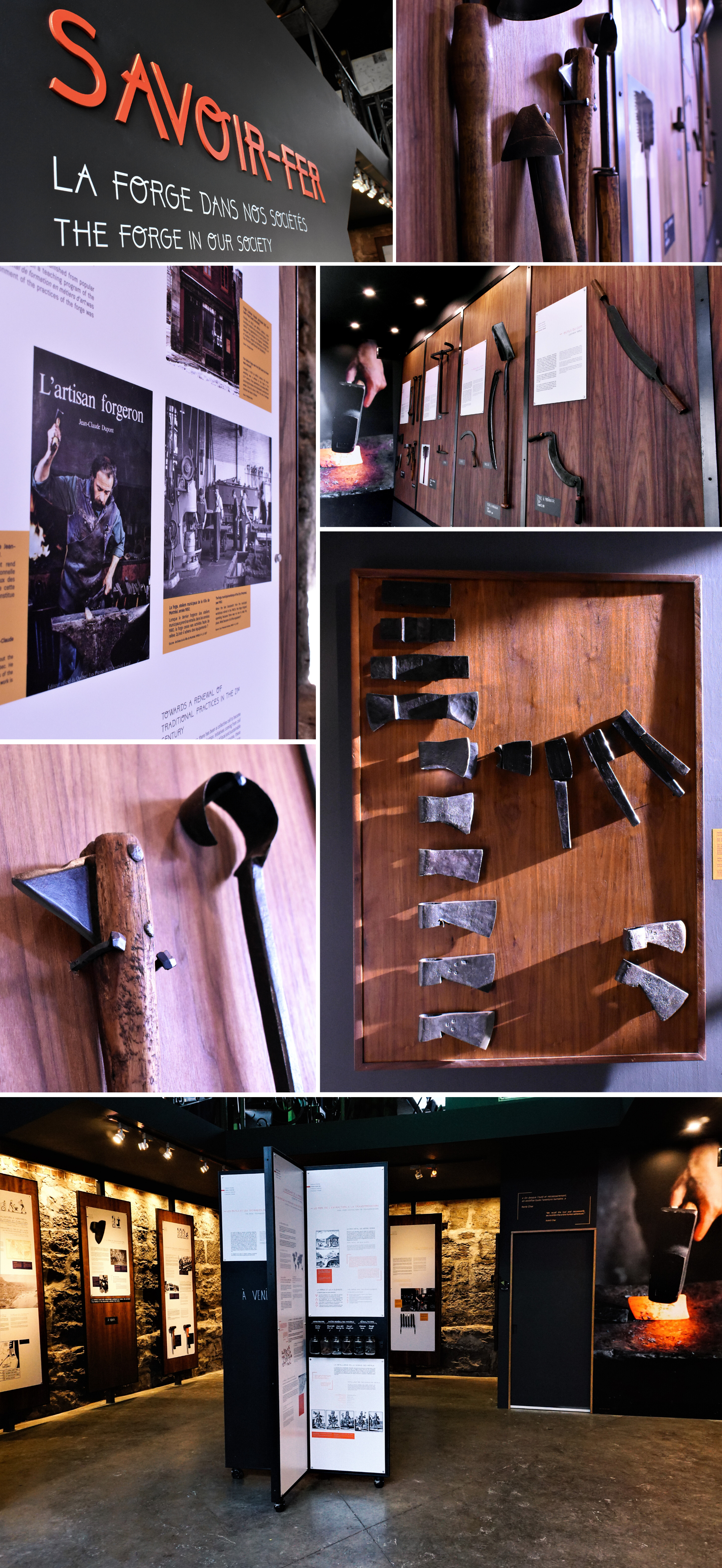Permanent exhibition SAVOIR-FER
Savoir-fer: blacksmithing in our societies
Right up to the industrial era, the forge helped our societies to grow by enabling the production of tools and objects of primary utility. The transformation of iron played a central role in contributing to technical progress and the development of populations throughout the world.
However, the period of industrialization has also affected the practice of these age-old skills. The shift from small-scale, customized production to mechanized, mass production transformed the face of the forge and its role in the production chain. The status of the artisan blacksmith, once at the heart of society, was relegated to the background, and his skills gradually forgotten in the collective memory.
In today's global context and in the face of the socio-environmental challenges we face, blacksmithing skills nevertheless offer a viable, sustainable and eco-responsible alternative to the current production system. Urban gardeners, microbrewers and craftsmen restoring the
heritage are, among others, once again calling on the skills of artisan blacksmiths.
This makes it possible to bring the forge up to date. The Savoir-fer exhibition presents the evolution of practices and the role of the artisan forge, from
industrialization to the present day. It also demystifies the work of the artisan blacksmith and highlights the research carried out by Forges de Montréal craftsmen and women on traditional know-how. Last but not least, it provides an insight into the history of the Riverside Pumping Station, a heritage building that has been home to the organization for almost 20 years.
Financial support and thanks
This exhibition received financial assistance from the Government of Quebec and the City of Montreal, as part of the program to support the dissemination of Montreal's heritage, which is part of the Entente de développement culturel de la métropole. We would also like to thank the Gallant family, the Borough of Ville-Marie, the Conseil des métiers d'art du Québec, Canadian Heritage Québec and Madame Phyllis Lambert, founder emeritus of the Canadian Centre for Archictecture and the Conseil des métiers d'art du Québec, for their financial support.
We would like to thank all our volunteers (Noé Beaudoin, Zacharie Longchamp-Miron, Léonard Blais-Hurtubise, Guy Bessette, Sandrine Contant-Joannin, Maxime Gallant, Marie-Claude Labrie, Félix Mathieu, Reynald Meunier-Daure, Olivier Truchon and Samy Labrie-Collette), Julien Castanié (illustrations), Le Comité (graphic design), Victoria Vanier (translation), Joanne Burgess, Alain Gelly and Pierre Wilson (validation committee), Martin Drouin and Nicolas Chebin (French editing), Patrice Roy and Maya Labrie-Collette (English editing), Vivien Paulucci, Marc-Olivier Paquette, Ivan Savchev, Jérémy Corriveau, Luc Émond and Jean-Luc Lacoste (layout), Samy Labrie-Collette (photographs) and Mathieu Collette, Catherine Charron and Mardjane Amin, for setting up the Savoir-fer project and their research, writing and creation.


